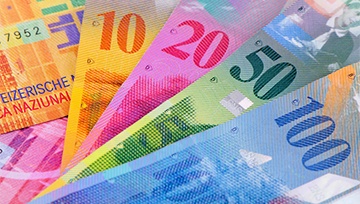The 3 most important markets that hold all the clues through 2020
I wrote this last night and thought I’d share as I think its important. Consider that it is just a view and may obviously not come to fruition, but in my mind its important to consider the outlook and recognise the probabilities and then trade price accordingly. Here is the article on our the site if this suits your reading preference – https://pepperstone.com/en-au/market-analysis/three-important-markets-hold-clues-through-2020/ . Given it centres on the bond market it may be new ground to many, so for clients who want clarity dont be shy.
Let’s consider the moves in markets this year and get to the very crux of what has caused this incredible one-way trend since March. Naturally, we can consider central bank policy settings, fiscal stimulus and re-openings as the key drivers, and then trading factors such as momentum and trend, but it has become clear that the three most influential drivers of all markets are:
- Real US 5- and 10-year Treasury yields
- US 5 & 10-year breakeven rates
- The USD
What we have effectively seen since March is one circular trade and everything else has been a derivative of this. At the heart of the thesis, we’ve witnessed real (or inflation-adjusted) Treasury yields moving lower, and when married with a falling USD the result has been gold/silver/Bitcoin trading aggressively higher, growth stocks outperforming value, with the NAS100 an ever-rallying juggernaut.
(white – US 5yr real Treasury, orange – gold, blue – NAS100)

(Source: Bloomberg)
We were once taught that economics drives asset values – not anymore. The Fed is using the markets to drive economics – it’s a topsy turvy, upside-down world. The Fed has gone full steam at influencing the wealth effect; that is, trying to push up asset values to such an extent that it feeds back into economics. If you can still make enough people feel rich, they spend.
As policy evolves to look ever more like MMT (Modern Monetary Theory) lite, perhaps the only constraint that truly puts a hand break on this monetary experiment is inflation, Which is why I look at US breakeven rates – a tradable bond instrument that measures average inflation expectations over a pre-defined duration. Inflation expectations begets inflation, so when breakevens are rising as we can see, we see a reflationary backdrop in markets.
We can also use breakevens rates to look at the inflation-adjusted, or ‘real’, returns in US Treasuries. As we can see, the combination of relentless buying in US treasuries (lower nominal yields), and rising inflation expectation has resulted in deeply negative real yields.
· Upper pane – Orange – US 10yr breakeven inflation, white – US 10-year Treasury
· Lower pane – US 10yr real rates

Historically this is quite an extreme and bizarre divergence. However, the fact is negative real yields makes the USD less attractive, especially when we hear that foreign investment funds have been aggressively increasing hedging ratios on their US investments – that is, selling USDs and buying JPY and EUR to enhance returns. Lower real yields make the expected cash flows of corporates more compelling and push traders further out the risk curve into high growth equities, which have also been boosted by the fact Apple, Facebook, Amazon and Microsoft are all net beneficiaries of the COVID19 crisis.
The move in the USD and real yields feeds back into higher commodity prices, which then subsequently boosts inflation expectations (breakevens) – effectively one big circular move.
The Fed has created this, but until inflation expectations move in excess of 2% – the Fed’s current target – then we know the Fed has a license to keep stimulating. It’s for this reason why I feel Breakevens are part of the holy trinity of influential instruments.
Is the tide about to change?
What concerns me though is the move in real yield may have gone too hard too fast. Now I know many talk at length about the risks in the market, but let’s look at the other side of the coin and consider the prospect that we see nominal bond yields moving higher from here, and by more than breakevens – where subsequently we would see higher real Treasury yields.

What would that mean for any market that has moved inversely to lower real yields?
Are we set to see higher volatility and uncertainty?
It may take some adjustment, but let’s look more tactically
Consider US and global data has consistently beaten expectations since April, and while the period where the re-openings manifested into economic improvement may be over, recent high-frequency data is not looking too terrible either. The 7-day average COVID-19 case count is falling in the US, including the Sun Belt states, which raised anxiety levels a few weeks ago.
US Congress hasn’t formally forged a fiscal stimulus deal, but given we’re so close to the election, I expect one to present itself in the next week or two and we should see $1200 stimulus checks boosting incomes into September – a time when schools are reopening and parents return back to work. This would seem a likely period where renewed re-openings present itself, as Trump pushes the boundaries into the November election, and where we also have the highly anticipated Jackson Hole (27th August) and September FOMC ahead of us.
Who knows, we might even be getting closer to a vaccine getting FDA-approval by late November/early December, with headlines to this effect coming in the months before. We may even see Trump’s odds of winning in November stage a comeback and that could have big implications for the USD and risk more broadly.
Will bond issuance drive higher yields?
I then consider the monster amount of government bond issuance from the Treasury Department expected between August and December. Unless the Fed starts to ramp up its bond-buying then the private investors (pension funds for example) will be asked to support and they will want to be compensated more than 56bp. With asset managers still holding a sizable long position (in US Treasury futures), could this, along with the aforementioned drivers, be the reason we see nominal bond yields rise, and faster than breakevens? I feel the risk is high.
What’s the trade?
If my thesis plays out, and timing as always is key) consider real yields will rise not because of a panic scenario (hitting inflation expectations), but because of better growth with nominal Treasuries moving more aggressively than breakevens. While some would argue higher real yields will promote an unwind on the trade that has worked so well since March, I see a more tactical trading environment – equity markets may not dive, but instead compel investors to rotate holdings – value stocks/sectors should outperform growth, so long US2000/short NAS100 trades would be one way to express that. US banks should outperform, so trading the XLF ETF with Pepperstone would work.
(US2000/NAS100 Ratio)

The USD will become more cyclically focused and likely rally vs the AUD, NZD and EM names. Gold may struggle given it has worked almost perfectly inversely to real Treasury yields, although the downside will be limited given the Fed will resume balance sheet expansion again and cries of yield curve control will ramp up.
The tides are a changing and the bond market holds all the cards. Trade it with Pepperstone.















